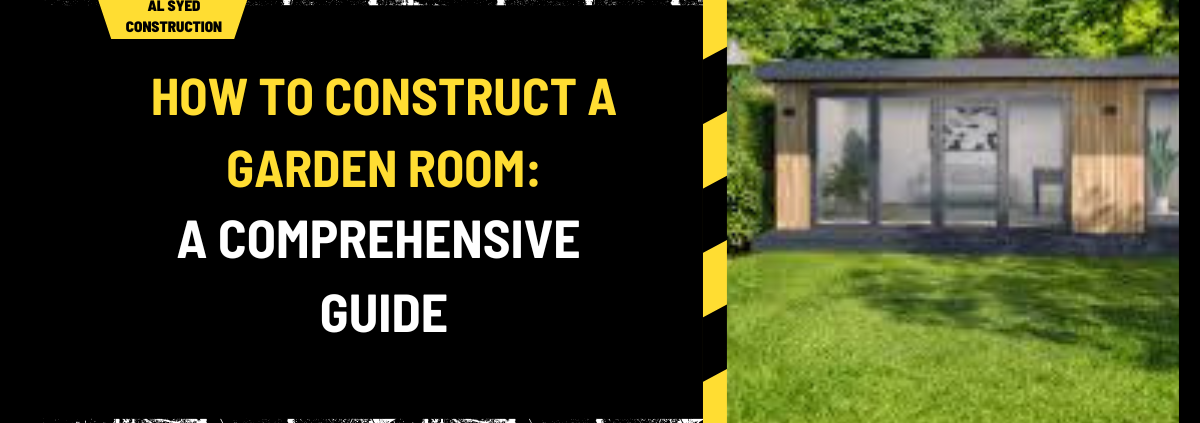How to Construct a Garden Room: A Comprehensive Guide
Creating a garden room can significantly enhance the functionality and appeal of your outdoor space. Whether used as an office, studio, guest room, or leisure area, a well-constructed garden room adds value and versatility to your home. This guide provides a detailed step-by-step process for designing and constructing a garden room, ensuring a successful project from start to finish.
Planning Your Garden Room
1. Define the Purpose and Requirements
Before beginning construction, it is essential to define the purpose of your garden room. This will influence the design, size, and features you need. Consider whether the space will serve as an office, gym, guest room, or relaxation area. Identify specific requirements such as electrical outlets, heating, cooling, and plumbing.
2. Design and Layout
Design Considerations
- Size and Shape: Determine the dimensions of the garden room based on its intended use and the available space in your garden. Common shapes include rectangular, square, or custom designs to fit your garden’s layout.
- Style and Aesthetics: Choose a style that complements your existing home and garden. Popular styles include modern, traditional, or rustic. Consider incorporating features such as large windows, skylights, or sliding doors to enhance natural light and connectivity with the outdoors.
- Materials: Select high-quality materials that offer durability and aesthetic appeal. Options include timber, brick, or composite materials for the structure, and glass or wooden panels for windows and doors.
3. Budgeting
Create a detailed budget that includes all aspects of the project, such as materials, labor, permits, and additional features. Allow for a contingency to cover any unexpected costs. Accurate budgeting ensures that you can complete the project without financial surprises.
Preparing the Site
1. Obtain Necessary Permits
Before starting construction, check with your local authorities to determine if you need planning permission or building permits. Regulations vary depending on location, so ensure compliance with all legal requirements.
2. Site Preparation
Clearing and Excavation: Clear the site of any debris, plants, or structures. Excavate the area to create a level foundation. The depth of excavation will depend on the type of foundation you choose.
3. Laying the Foundation
Concrete Foundation
- Footings: Dig trenches for the footings according to the dimensions specified in your design plans. Pour concrete into the trenches and allow it to cure fully.
- Slab: Once the footings are set, lay a concrete slab to form the base of the garden room. Reinforce the slab with steel mesh or rebar for added strength.
Timber Foundation
- Decking: Construct a timber deck or platform using treated wood. Ensure the platform is level and securely anchored to the ground.
Building the Structure
1. Erecting the Frame
Timber Frame
- Walls and Roof: Assemble the timber frame according to your design. Securely fix the wall panels to the base and erect the roof structure. Ensure that all connections are solid and level.
- Insulation: Install insulation between the frame sections to ensure energy efficiency and comfort.
2. Constructing the Walls
Cladding and Panels
- External Cladding: Apply external cladding to protect the garden room from weather elements. Options include timber cladding, composite panels, or brickwork.
- Internal Walls: Install internal wall panels or plasterboard. Consider soundproofing options if the garden room will be used for work or as a guest room.
3. Installing Windows and Doors
Windows
- Types: Choose windows that offer good insulation and security. Double or triple glazing is recommended for energy efficiency.
- Installation: Fit the windows into the pre-cut openings in the wall frame. Seal around the edges to prevent drafts and water ingress.
Doors
- Types: Select doors that match the style of the garden room and provide easy access. Options include sliding doors, French doors, or bi-fold doors.
- Installation: Install the doors according to the manufacturer’s instructions, ensuring proper alignment and secure fitting.
Interior Finishing
1. Flooring
- Types: Choose flooring that suits the intended use of the room. Options include laminate, hardwood, carpet, or tile.
- Installation: Prepare the subfloor and install the chosen flooring material. Ensure it is level and securely fixed.
2. Electrical and Plumbing
Electrical Work
- Wiring: Install electrical wiring for lighting, power outlets, and any additional features. Follow safety regulations and ensure all work is carried out by a qualified electrician.
- Lighting: Choose lighting that enhances the functionality and ambiance of the room. Consider options such as recessed lighting, pendant lights, or spotlights.
Plumbing (If Required)
- Plumbing Installations: If the garden room requires plumbing, such as for a sink or bathroom, ensure that the installation is carried out by a professional plumber. Connect to the existing water supply and drainage systems.
3. Interior Decoration
- Painting and Wallpapering: Apply paint or wallpaper to the walls to match your desired style. Choose colors and patterns that create the desired mood and complement the room’s purpose.
- Furnishing: Furnish the garden room with appropriate furniture and accessories. Consider comfort, functionality, and style when selecting pieces.
Final Touches
1. Landscaping
Enhance the area surrounding the garden room with landscaping features. Plant shrubs, flowers, or trees to create a seamless transition between the garden room and your garden. Consider adding pathways or patio areas for added functionality.
2. Outdoor Features
Add outdoor features such as decking, pergolas, or garden furniture to complement the garden room. These features can provide additional spaces for relaxation or entertaining.
3. Maintenance
Regular maintenance ensures the longevity of your garden room. Clean the exterior and interior regularly, check for any signs of damage, and address any issues promptly.
By following these detailed steps, you can successfully construct a garden room that enhances your outdoor space and meets your specific needs. Whether used as a workspace, guest accommodation, or leisure area, a well-built garden room provides comfort, functionality, and style.




